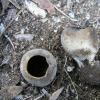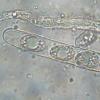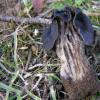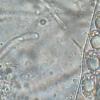
08-12-2025 18:59
 Lothar Krieglsteiner
Lothar Krieglsteiner
.. found by a seminar-participant, I do not know t

08-12-2025 21:04
Mark Stevens"Hello everyone,I'm relatively new to microscopy (

08-12-2025 17:37
 Lothar Krieglsteiner
Lothar Krieglsteiner
20.6.25, on branch of Abies infected and thickened

07-12-2025 16:07
Arnold BüschlenHallo, ich habe in einer Moos-Aufsammlung (epiphy

16-03-2014 22:00
Hello,I found this species a few months ago but ha

08-12-2025 13:39
Thomas Læssøehttps://svampe.databasen.org/observations/10572899

05-12-2025 17:33
 Bruno Coué
Bruno Coué
Bonjour, je serais heureux de recueillir votre avi
Helvella sp. ?
VASILEIOS KAOUNAS,
28-02-2008 08:08
It was found in forest Pinus halepensis and pistacia lentiscus.
In the region Schinias-Attiki-Greece, 25-2-08
VASILEIOS KAOUNAS,
28-02-2008 08:10
VASILEIOS KAOUNAS,
28-02-2008 08:13
Nicolas VAN VOOREN,
28-02-2008 08:13

Re:Helvella sp. ?
Yes, no problem for the first species.
Nicolas VAN VOOREN,
28-02-2008 08:15

Re:Helvella sp. ?
For the second one, please give us microscopic features (spore size, spore shape, etc.).
VASILEIOS KAOUNAS,
28-02-2008 08:15
Mario Filippa,
28-02-2008 14:52
Re:Helvella sp. ?
The second species may be Helvella juniperi. The macroscopical appearance is similar to Helvella lacunosa, but normally the ribs of the stipe have blunt edges. The spores longer than 20-21 microns and in good proportion subcylindrical are also typical. You should control the ectal excipulum in a thin section. The ectal excipulum in H. juniperi is thick about 200 microns and made up of chains of inflate cells; in H. lacunosa is thinner (80-120) and with the terminal cells +- clavate and bigger than others.




